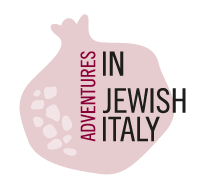Why northern Italy
Situated between the Alps and the Mediterranean, the eight regions that define Northern Italy (Valle d'Aosta, Piedmont, Liguria, Lombardy, Emilia-Romagna, Veneto, Trentino-Alto Adige and Fruili Venezia Giulia) have for centuries been strategically positioned to take advantage of the major trade routes linking the Mediterranean Sea with Northern Europe. After the fall of the Roman empire, the entire region was invaded by barbarian tribes, as well as more civilized peoples, but relative peace and prosperity returned to the region after the year 1000 AD, with the rise of the middle class and semi-independent, merchant-controlled ‘communes’. The entrepreneurial spirit developed under these early governments is carried on today by many Northern Italians, whose thriving businesses have turned the Italian North into one of Europe's wealthiest regions.
After the communes gave way to aristocratic or oligarchic rule, trade remained of vital importance to the cities of Northern Italy, most notably Milan, Venice, Bologna and Genoa but also numerous smaller centers, and this accumulation of wealth resulted in a prodigious flowering of the arts. The great artistic patronage of the Renaissance was one of the by-products of the continual antagonism among major European powers, which continually fought to establish areas of strategic influence in the region. Between the 15th and 17th centuries, Europe’s best painters, sculptors, writers and poets circulated among the Northern Italian courts, leaving behind masterpieces for the ages. Leonardo da Vinci spent two decades in Milan under the patronage of the Sforza family. The Gonzagas of Mantua sponsored the creation of the splendid frescoes painted by Andrea Mantegna. Cosmè Tura rose to fame in Ferrara, courtesy of the Este family, and in Venice, the grandeur of the maritime republic was captured brilliantly by the talented Bellini family and later Canaletto. Great musical genius also had its origins here, with composer Claudio Monteverdi and luthier Antonio Stradivari from Cremona, and violin virtuoso Niccolò Paganini from Genoa, to name but a few.
Even without its colorful history, Northern Italy’s geography and climate make it unique in comparison to other areas of the country or Europe. The 15,000-foot Alps that form Italy's border with France, Switzerland, Austria and Slovenia usually block the colder arctic air from descending on the Northern Italian plains during the winter, while the warm, moist Mediterranean air – and sunshine - has made the region one of Europe’s most fertile. Northern Italy boasts an incredible variety of landscapes, from the flatlands of the majestic Po River to the celebrated canals of Venice. Deep mountain lakes and the rugged peaks of the Dolomites give way to the gentle hills of the Monferrato and the Langhe, famous for their truffles. Such diversity produces robust wines and culinary specialties not found anywhere else on the planet, so it is no wonder that Northern Italians treasure their home, sharing their secrets more generously with those who are willing to venture off the beaten path.
After the communes gave way to aristocratic or oligarchic rule, trade remained of vital importance to the cities of Northern Italy, most notably Milan, Venice, Bologna and Genoa but also numerous smaller centers, and this accumulation of wealth resulted in a prodigious flowering of the arts. The great artistic patronage of the Renaissance was one of the by-products of the continual antagonism among major European powers, which continually fought to establish areas of strategic influence in the region. Between the 15th and 17th centuries, Europe’s best painters, sculptors, writers and poets circulated among the Northern Italian courts, leaving behind masterpieces for the ages. Leonardo da Vinci spent two decades in Milan under the patronage of the Sforza family. The Gonzagas of Mantua sponsored the creation of the splendid frescoes painted by Andrea Mantegna. Cosmè Tura rose to fame in Ferrara, courtesy of the Este family, and in Venice, the grandeur of the maritime republic was captured brilliantly by the talented Bellini family and later Canaletto. Great musical genius also had its origins here, with composer Claudio Monteverdi and luthier Antonio Stradivari from Cremona, and violin virtuoso Niccolò Paganini from Genoa, to name but a few.
Even without its colorful history, Northern Italy’s geography and climate make it unique in comparison to other areas of the country or Europe. The 15,000-foot Alps that form Italy's border with France, Switzerland, Austria and Slovenia usually block the colder arctic air from descending on the Northern Italian plains during the winter, while the warm, moist Mediterranean air – and sunshine - has made the region one of Europe’s most fertile. Northern Italy boasts an incredible variety of landscapes, from the flatlands of the majestic Po River to the celebrated canals of Venice. Deep mountain lakes and the rugged peaks of the Dolomites give way to the gentle hills of the Monferrato and the Langhe, famous for their truffles. Such diversity produces robust wines and culinary specialties not found anywhere else on the planet, so it is no wonder that Northern Italians treasure their home, sharing their secrets more generously with those who are willing to venture off the beaten path.


